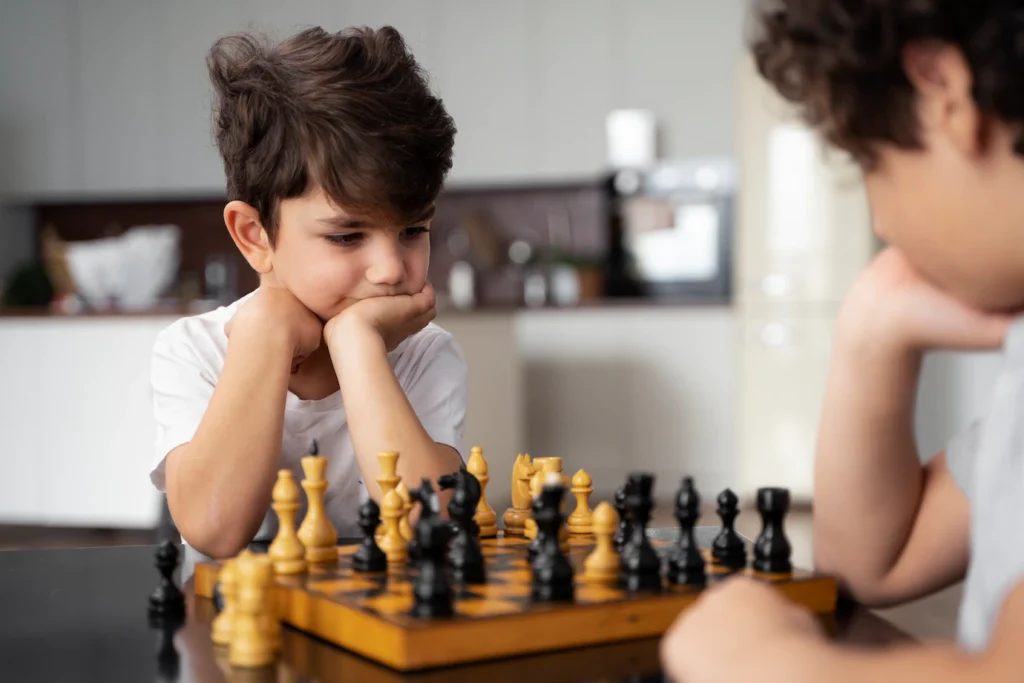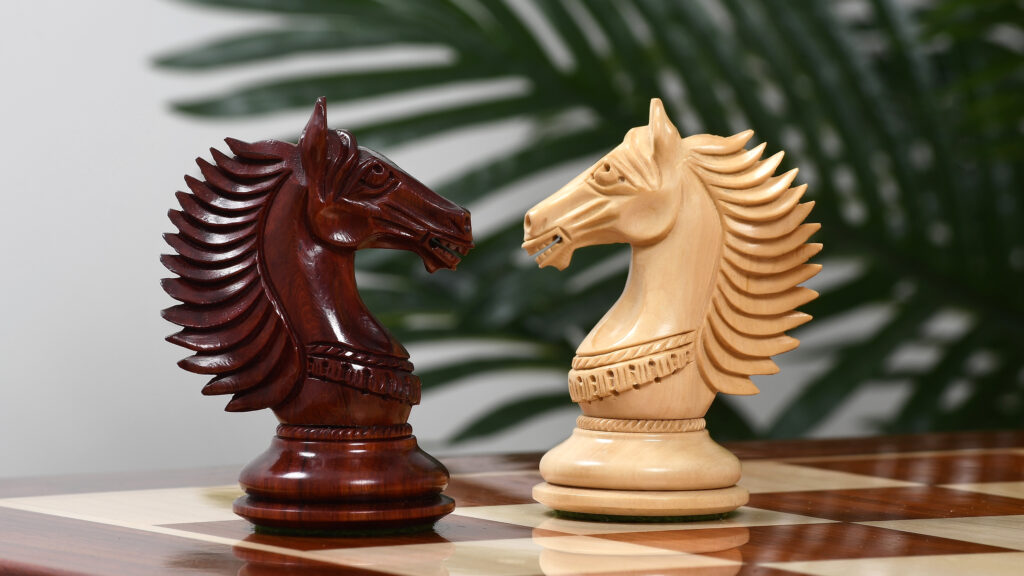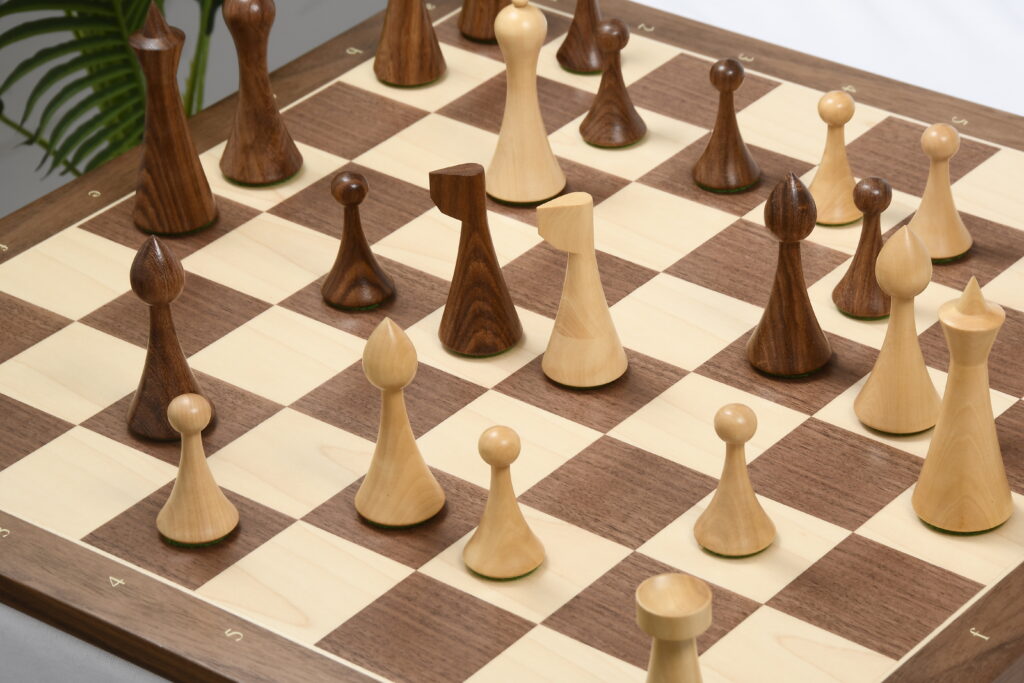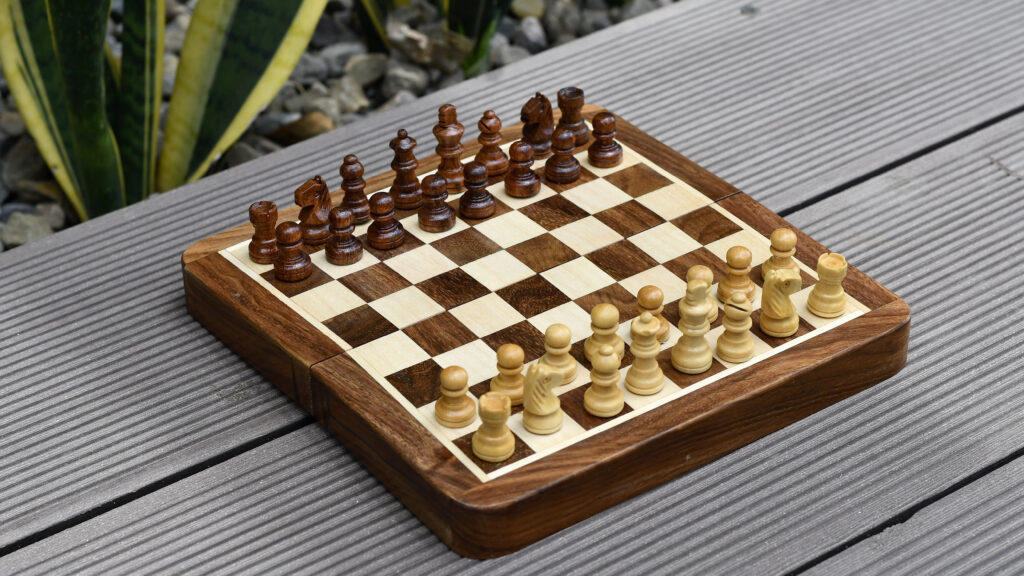The game of chess is like a swordfight, you must think first before you act. Chessbazaar.com is great place where you can buy beautiful handmade chess sets and you can learn the rules of chess game too.
Goal of Chess Game
Chess is a two-player game. These two player sits opposite side of the chess board , one player having 16 black or dark pieces while other chess player having white or light pieces. Make sure that the board is placed in such a way that the first white square is always on the right hand side of the both players. The main goal of chess game is checkmate the other king or to capture the opponents king. At that point, the game is over.
General Chess Rules
• White is always first to move and players take turns alternately moving one piece at a time. If a player’s turn is to move, he is not in check but has no legal moves, this situation is called “Stalemate” and it ends the game in a draw.
• Each type of piece has its own method of movement. A piece may be moved to another position or may capture an opponent’s piece, replacing on its square (en passant being the only exception). With the exception of the knight, a piece may not move over or through any of the other pieces.
• When a king is threatened with capture (but can protect himself or escape), it is called check. If a king is in check, then the player must make a move that eliminates the threat of capture and cannot leave the king in check.
• Checkmate happens when a king is placed in check and there is no legal move to escape. Checkmate ends the game and the side whose king was checkmated looses. Chess for kids would be a great option to help the kid enhance his thinking capability with the chess strategies involved.
Chess Board and Chess Pieces Set Up
The chessboard made up of 64 square (8 x 8 grid), these 64 squares further divided into 32 dark squares and 32 light squares. The colors of the sixty-four squares alternate between light and dark, and are referred to as “light squares” and “dark squares”. The chessboard is placed between the players in such a way that the near corner square to the right of the player is white. Lets start with the chess pieces. The 16 chess pieces are made up of 1 King, 1 queen, 2 bishops, 2 knights, 2 rooks, and 8 pawns. 2nd row is filled by Pawns. In 1st row rook go in the corner, then knights, followed by bishops and finally the queen. Note that the queen is always on her own color while the king is always on the opposite color.
Beginning of Chess Game
The player with white pieces always moves first. Therefore, players generally decide who will get to be white by chance or luck such as flipping a coin or having one player guess the color of the hidden pawn in the other player’s hand. White then makes a move, followed by black, then white again, then black and so on until the end of the game.
Movement of Pieces
The 6 different kinds of pieces move differently. Pieces cannot move through other pieces (though the knight can jump over other pieces), and can never move onto a square with one of their own pieces. However, they can be moved to take the place of an opponent’s piece which is then captured. Pieces are generally moved into positions where they can capture other pieces (by landing on their square and then replacing them), defend their own pieces in case of capture, or control important squares in the game. The following diagrams will explain the movement of the pieces that must keep in mind when playing chess.
• The King
The King play an important role in chess game, whole game is playing to save king. The King is tallest pieces on the chessboard and King has cross finials at top. By the rules of chess, his moves are pretty limited, he can only move one square at a time but he can move forward, backward, left, right and diagonally. Click on the ‘>’ button in the diagram below to see how the king can move around the board.
• The Queen
The Queen is the most powerful chess pieces on the chessboard. The Queen has a beautiful crown on its top. According to the rules of playing chess, she can move vertically, horizontally and diagonally just as many squares she wants (without jumping other chess pieces).
• Bishop
Most bishops also have a cut near the top resembling that of a mouth. The bishop may move as far as it wants, but only diagonally. Each bishop starts on one color (light or dark) and must always stay on that color. Bishops work well together because they cover up each other’s weaknesses.
• Knight
Knight is a unique chess piece. Knights move in a very different way from the other pieces – going two squares in one direction (forward, backward, left, or right) and then one more move at a 90 degree angle, just like the shape of an “L”. Knights are also the only pieces that can move over other pieces.
• Rook
The rook is also called the castle by some and it actually looks like a castle or at least a castle tower . The rook may move as far as it wants, but only forward, backward, and to the sides. The rooks are particularly powerful pieces when they are protecting each other and working together.
• Pawn
Pawn is smallest pieces on the chessboard. Pawns can only move forward one square at a time, except for their very first move where they can move forward two squares. Pawns can only capture one square diagonally in front of them. They can never move or capture backwards. If there is another piece directly in front of a pawn he cannot move past or capture that piece.
Special Moves
• Castling
This move allows you to do two important things all in one move: get your king to safety (hopefully), and get your rook out of the corner and into the game. On a player’s turn he may move his king two squares over to one side and then move the rook from that side’s corner to right next to the king on the opposite side. (See the example below.) However, in order to castle, the following conditions must be met:
• It must be that king’s very first move.
• It must be that rook’s very first move.
• There cannot be any pieces between the king and rook to move.
• The king may not be in check or pass through check.
Notice that when you castle one direction the king is closer to the side of the board. That is called castling kingside. Castling to the other side, through where the queen sat, is called castling queenside. Regardless of which side, the king always moves only two squares when castling.
• En Passant
There is a unique chess rule which involves a special move in chess that many casual players are not aware of, the rule is called “en passant”. If a pawn moves out two squares on its first move, and by doing so lands to the side of an opponent’s pawn (effectively jumping past the other pawn’s ability to capture it), that other pawn has the option of capturing the first pawn as it passes by. This special move must be done immediately after the first pawn has moved past, otherwise the option to capture it is no longer available.
Related Post: Chess Pieces Moves – An illustrated guide
• Promotion
Pawns have another special ability and that is that if a pawn reaches the other side of the board it can become any other chess piece (called promotion). A pawn may be promoted to any piece either a queen, a rook, a bishop, or a knight, of the same colour as the pawn. A pawn is usually promoted to a queen.
End of the Game
• Winning
The game is won by the player
• who has checkmated his opponent’s king.
• whose opponent declares he resigns.
• Draw
The game is drawn when the king of the player who has the move is not in check, and this player cannot make any legal move. The player’s king is then said to be “stalemated”. This immediately ends the game.
The game is drawn upon agreement between the two players.
The game is drawn when one of the following endings arises:
• king against king;
• king against king with only bishop or knight;
• king and bishop against king and bishop, with both bishops on diagonals of the same colour.
• Losing
The game is lost by a player who has not completed the prescribed number of moves in the allotted time, unless his opponent has only the king remaining, in which case the game is drawn.
Source : Chess.com



